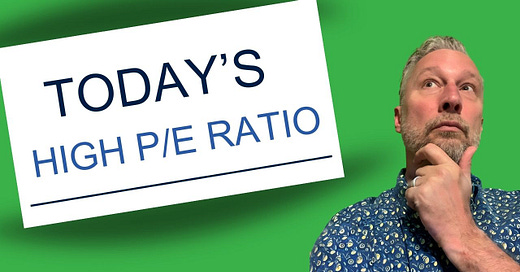Happy Thursday!
When looking at a stock for investing—not trading—I always ask, "Is this stock cheap or expensive?" It’s a tough question. Most people don’t have the tools to dig through financial statements and business models to figure it out.
That’s why I like to use one simple tool: the P/E ratio (price-to-earnings ratio). It’s not the only tool, but it’s a quick way to gauge whether a stock is priced high or low relative to its earnings and its peers. There are different types—trailing 12-month P/E, Shiller P/E, forward P/E—and tomorrow, I’m breaking it all down at a multi-speaker Substack event featuring finance experts and Nobel Prize winners.
Don’t miss it! Register here → markettaker.com/stack
#StockMarket #InvestingTips #Finance #TradeSmart
Options involve risk and are not suitable for all investors. Before trading options, please read Characteristics and Risks of Standardized Option (ODD) which can be obtained from your broker; by emailing investorservices@theocc.com; or from The Options Clearing Corporation, 125 S. Franklin St., Suite 1200, Chicago, IL 60606. The content posted by our authors is intended to be general education and / or general information in nature. We are NOT providing advice for any individual trader. No statement made by our authors or subscribers is intended to be a recommendation or solicitation to buy or sell any security or to provide trading or investment advice. Traders and investors considering options should consult a professional tax advisor as to how taxes may affect the outcome of contemplated options transactions. Futures and forex trading contains substantial risk and is not for every investor. An investor could potentially lose all or more than the initial investment. Risk capital is money that can be lost without jeopardizing one's financial security or lifestyle. Only risk capital should be used for trading and only those with sufficient risk capital should consider trading. Past performance is not necessarily indicative of future results.











Share this post